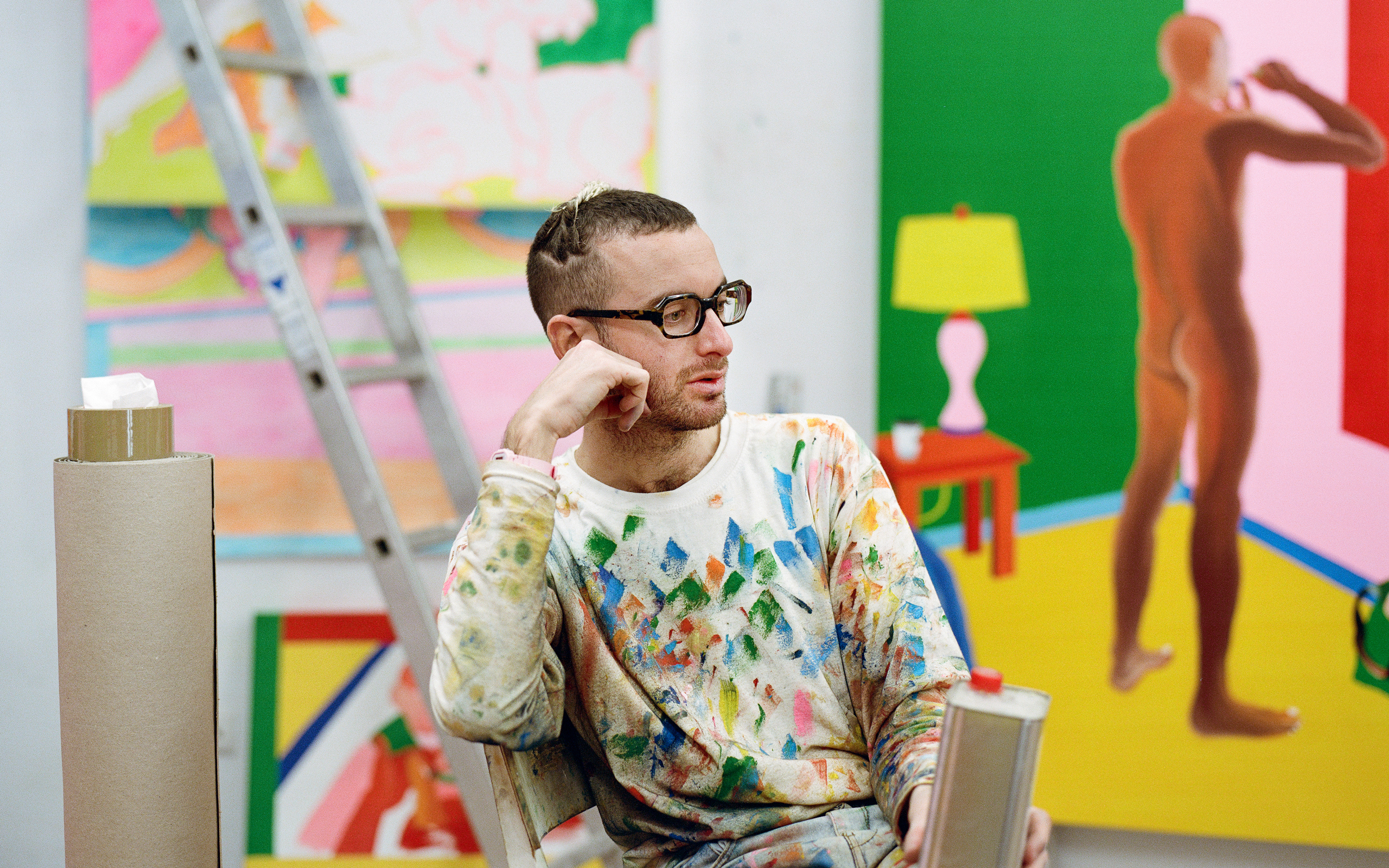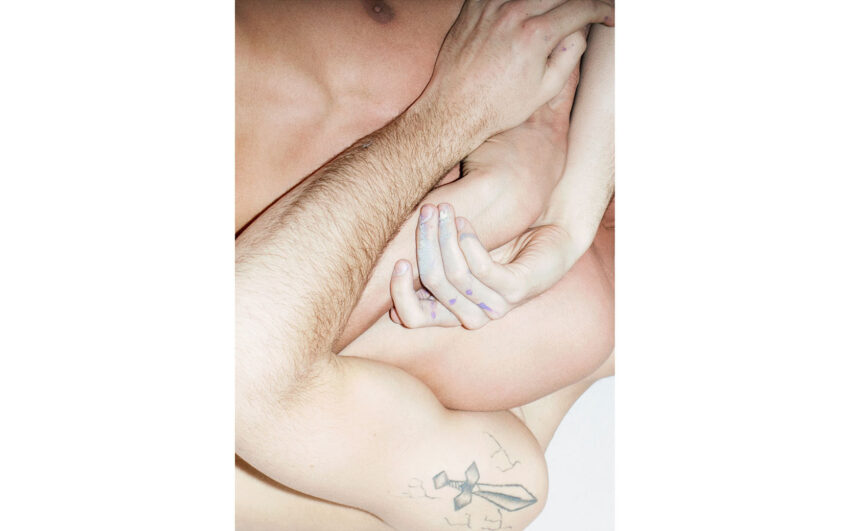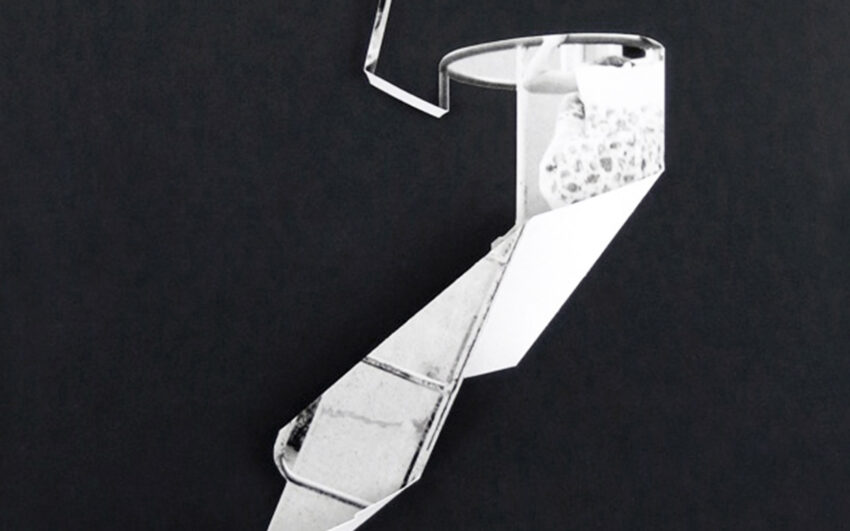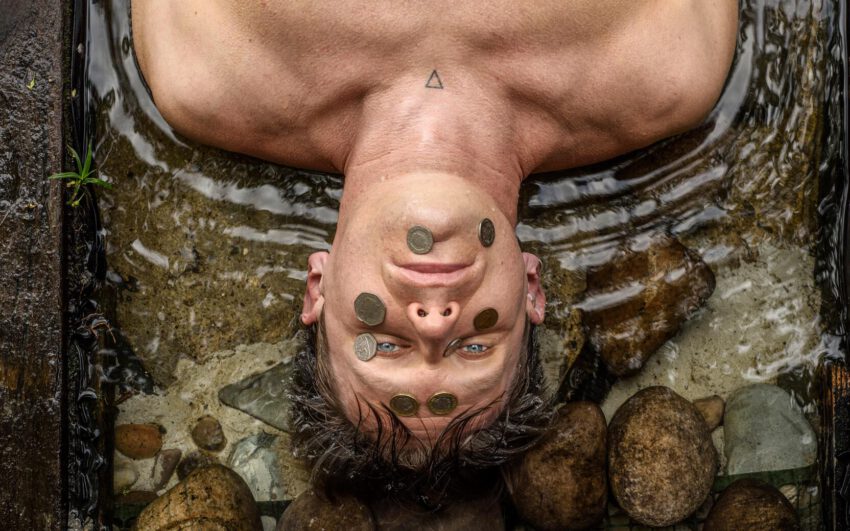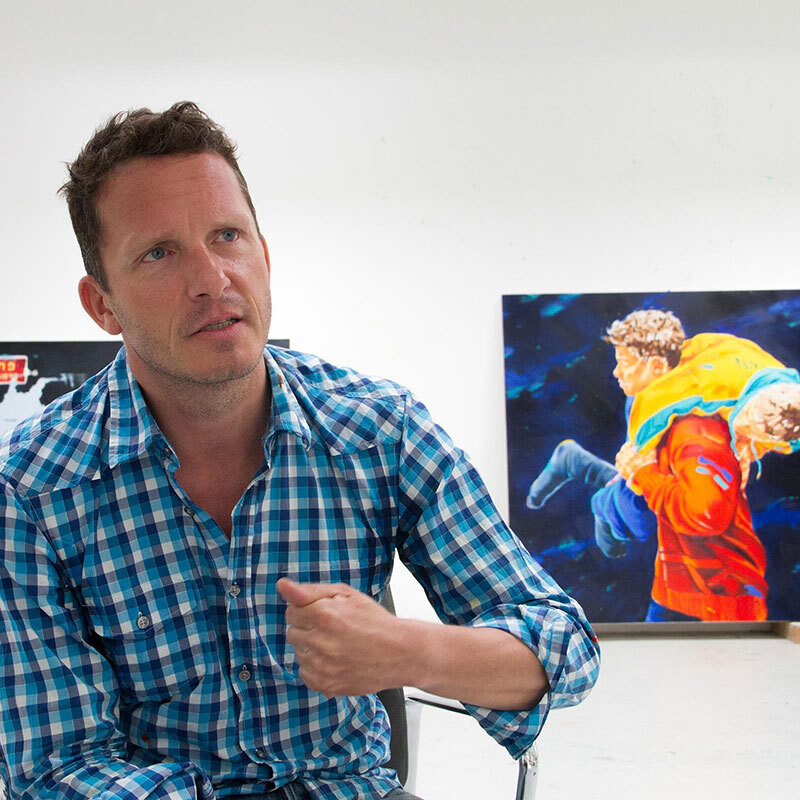Upon first glance, the works of Navot Miller seem like postcards from a psychedelically colorful trip to a debaucherous dreamland. A closer glance reveals telltale hints and signs of the Berlin-based rising star’s past as a religious boy who grew up in a small and secluded Orthodox Jewish community in Israel. In Miller’s paintings, euphoric, carousing youths seeking drugs and tantalizing moments emerge from backdrops where the sexual meets the sacred. In conversation with Collectors Agenda, Miller shares how immigration, a fascination with color and an insistence on translating reality into humorous observations provides him with inspiration for the personal painterly compositions he crafts and keeps him on an ongoing journey of discovery.
Navot, I’d like to give readers a tangible feel of your work surroundings. Tell us a little bit about your studio: Where is it located in Berlin? How long have you been working in it?
This is my first-ever proper studio. I moved into it in January 2021 and have been working here ever since. It is located in the southern Berlin borough of Tempelhof. I used to live in this building. The studio is based on the ground floor, which was previously utilized as a storage room. When I left the building as a tenant, I told the owners that if the space is ever vacated, I would love to rent it as a studio and work there. In 2020, during a COVID lockdown, the house management contacted me to say that it was available. Moving to the studio marked a shift in my practice. It was only when I moved here that I began painting in oils.
What inspired this development?
I started studying at the Weissensee School of Art and Design in 2017, and from the beginning of my studies until 2020 I worked primarily with pastels and pencils on paper. I had been working in this medium for quite some time. Having a proper studio all to myself (as opposed to the smaller spaces I had shared with other artists during my studies) lent itself to this change. In 2021, I showed some works on paper in a group exhibition at Salzburg’s Elektrohalle Rhomberg gallery, with whom I had kept in touch. They later contacted me to tell me that a collector had seen my work and had inquired whether I also work with oil on canvas. I had already been told by certain peers and mentors that I should start working with paint and when I heard this, I felt the desire to do so growing in me.
Why hadn’t you experimented with this format earlier?
Because I was uncertain that I would be able to achieve what I was already capable of using pastels on paper. I had wanted to experiment with it for some time but possibly did not want it enough. However, that inquiry from the collector proved to be the decisive factor, and I told the gallery to let the collector know that Navot has moved into a new studio, and he is now painting with oil on canvas. In response, they offered me a solo show where I will exhibit my first oil paintings.
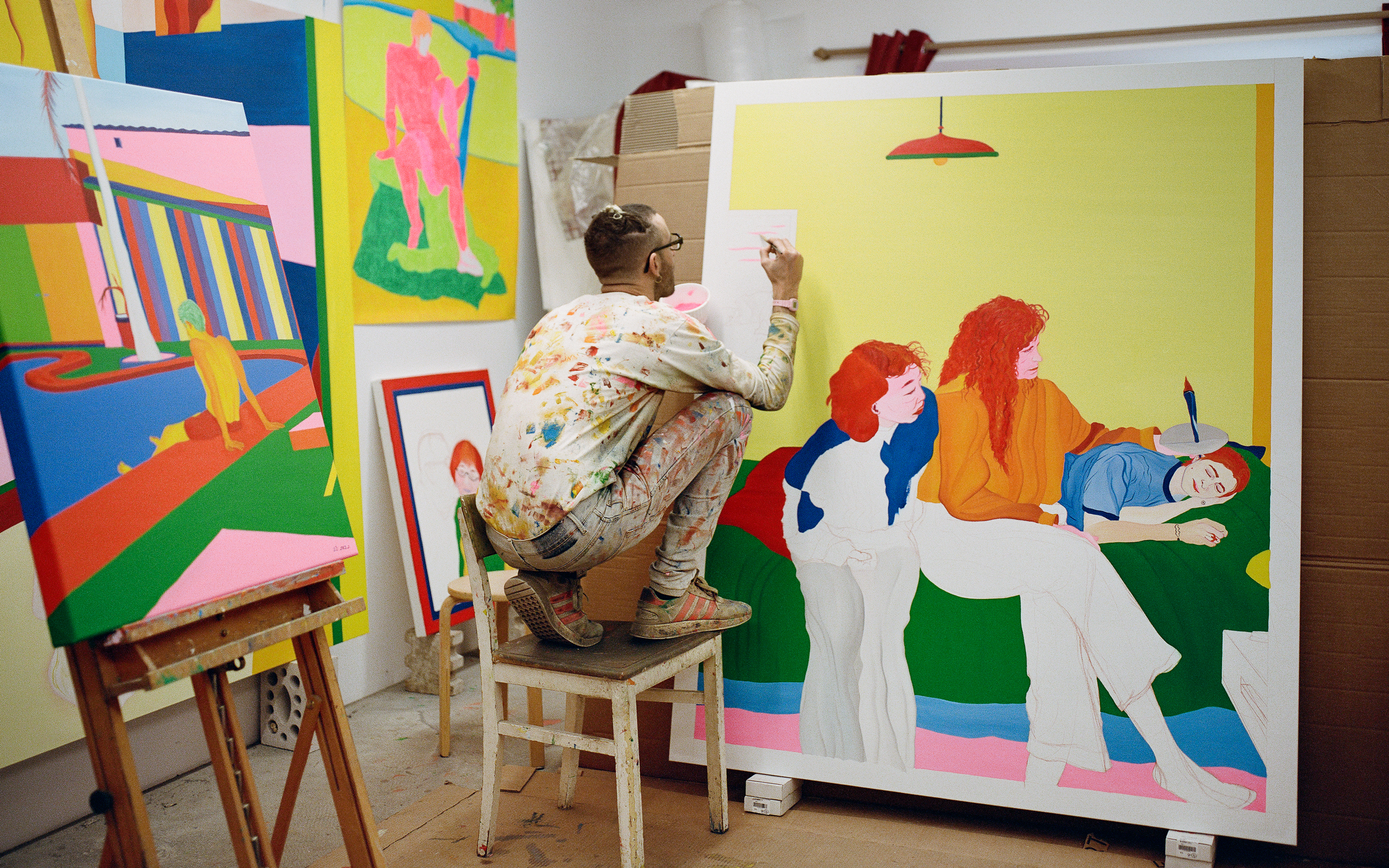
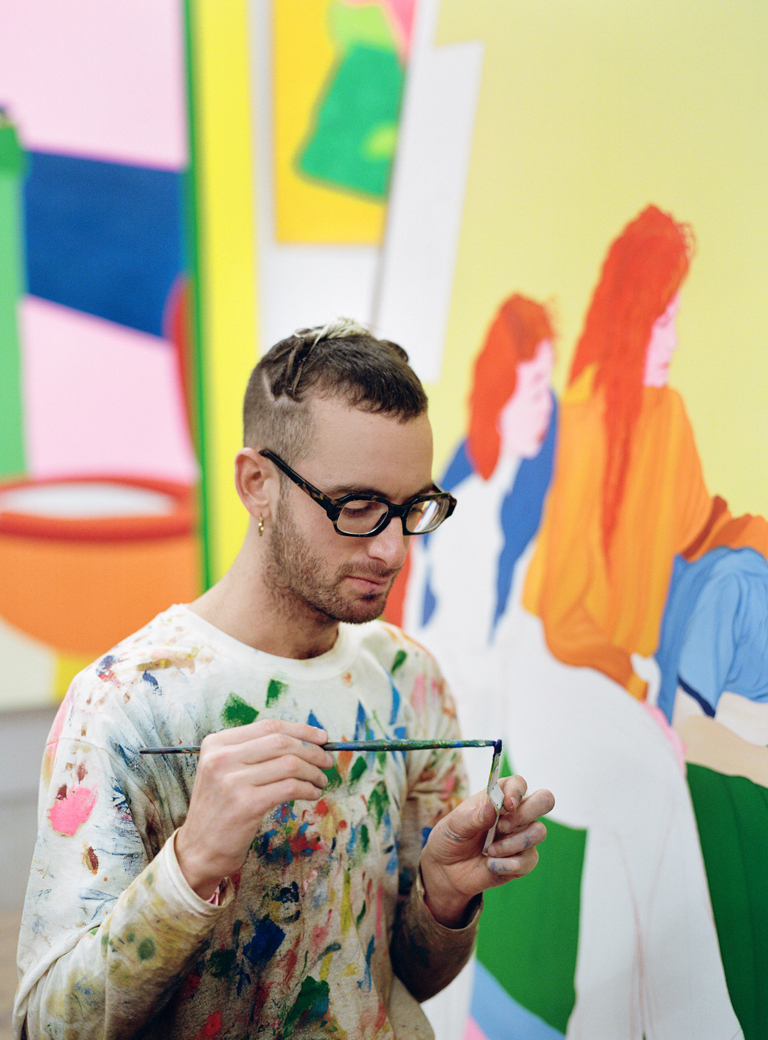
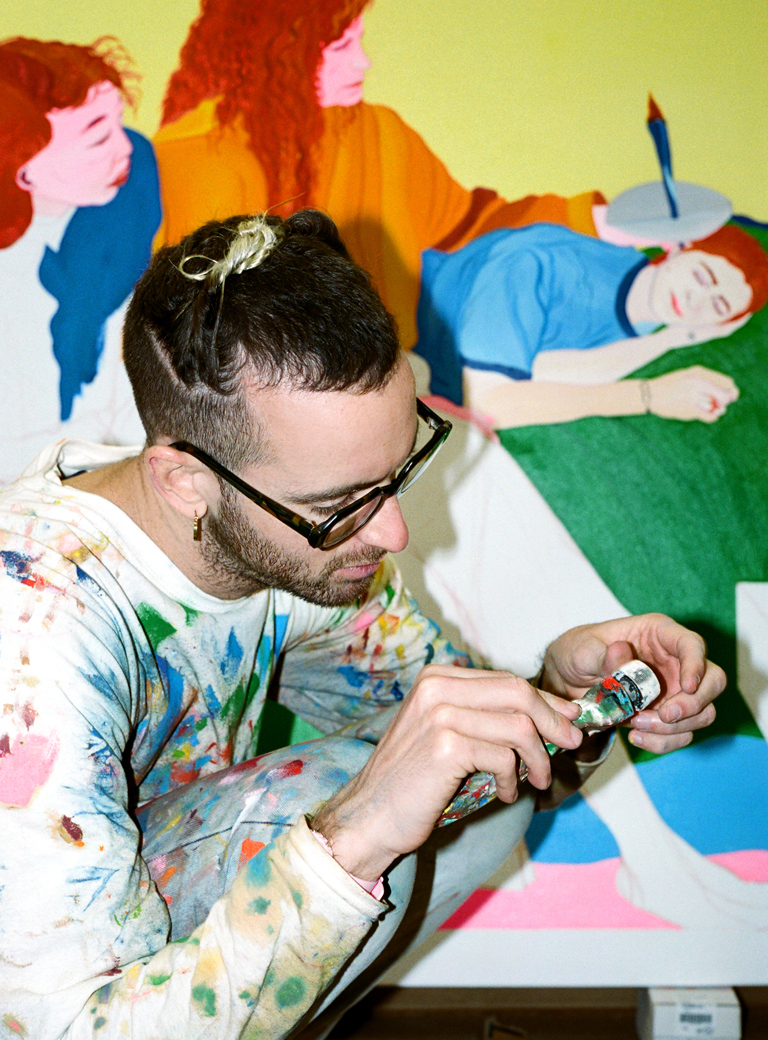
I’d like to hear more about the technical aspect of your studio work. Your paintings are quite large in scale. Do you do a lot of preparatory work in advance before you create them? Do you only work on one painting at a time or do you work simultaneously with the purpose of creating a series?
My work is based on photos and videos. I take videos with my phone of people I spend time with or scenes that I find interesting, and then I make screenshots of frames within the video that I find compelling. In that sense, my work is personal and intimate. It is based on events that occurred to me, people I spent time with, or moments I witnessed. I refer to the videos that I accumulate on my phone as an image bank or an archive from which I draw my inspiration. Since this has been the impetus for my paintings for quite a while, I have become skilled at identifying in advance situations, postures, sceneries and individuals that I would like to photograph because I know they could become the basis for a work. The paintings themselves evolve in a straightforward manner, and the process is usually not lengthy. I start by doing preliminary sketches of the photos I have selected. I work directly on the canvas with oil-based pencils, drawing out the scenes and then filling them in with color. I usually but not always like working in a large format, I think of it as a medium of its own and feel attracted to the qualities it offers.
That’s an unusual approach to painting. Do you consider yourself to be a painter or is your work more rooted in the perspective and traditions of drawing? How would you define your artistic practice?
Even the word ‘visual artist’ sometimes feels too much but for lack of a better definition, I would call myself a visual artist, because that would be more accurate than referring to myself as a painter.
Could you explain your attraction to photographic references in your process, as opposed to drawing or painting from the imagination?
I always worked with a photographic reference. Even as a child, I recall taking blank pages and tracing onto them the outlines of posters or film announcements that appeared in the newspaper. I still have sketchbooks from my childhood that contain these early amateur tracings.
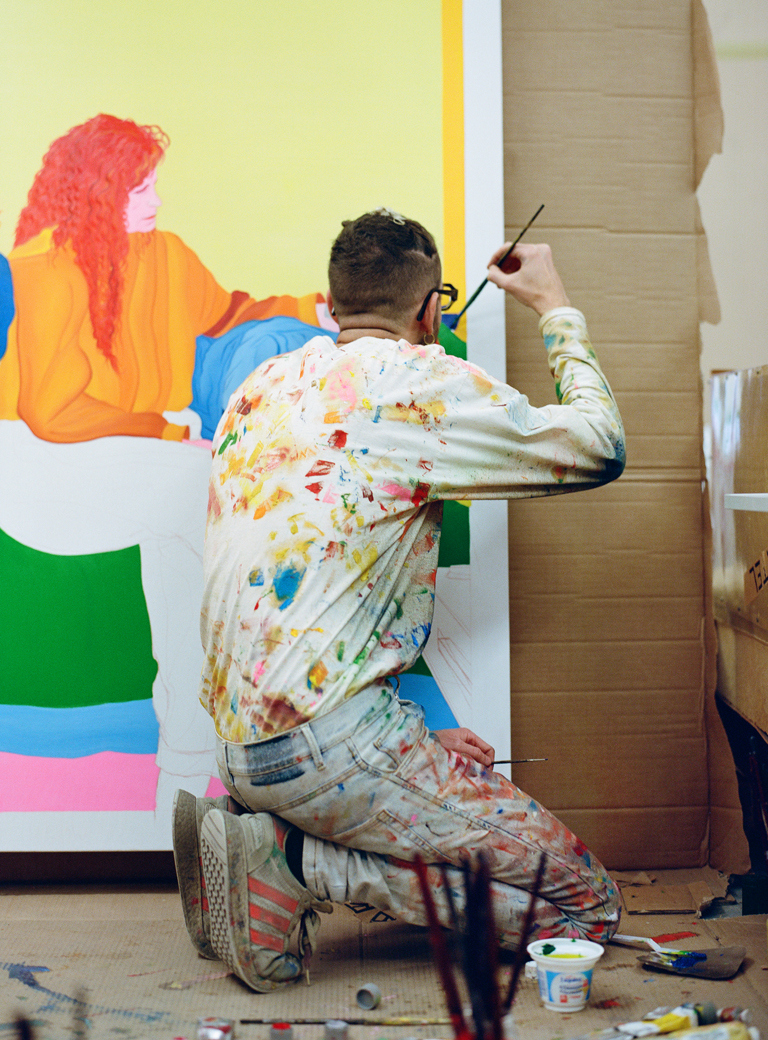
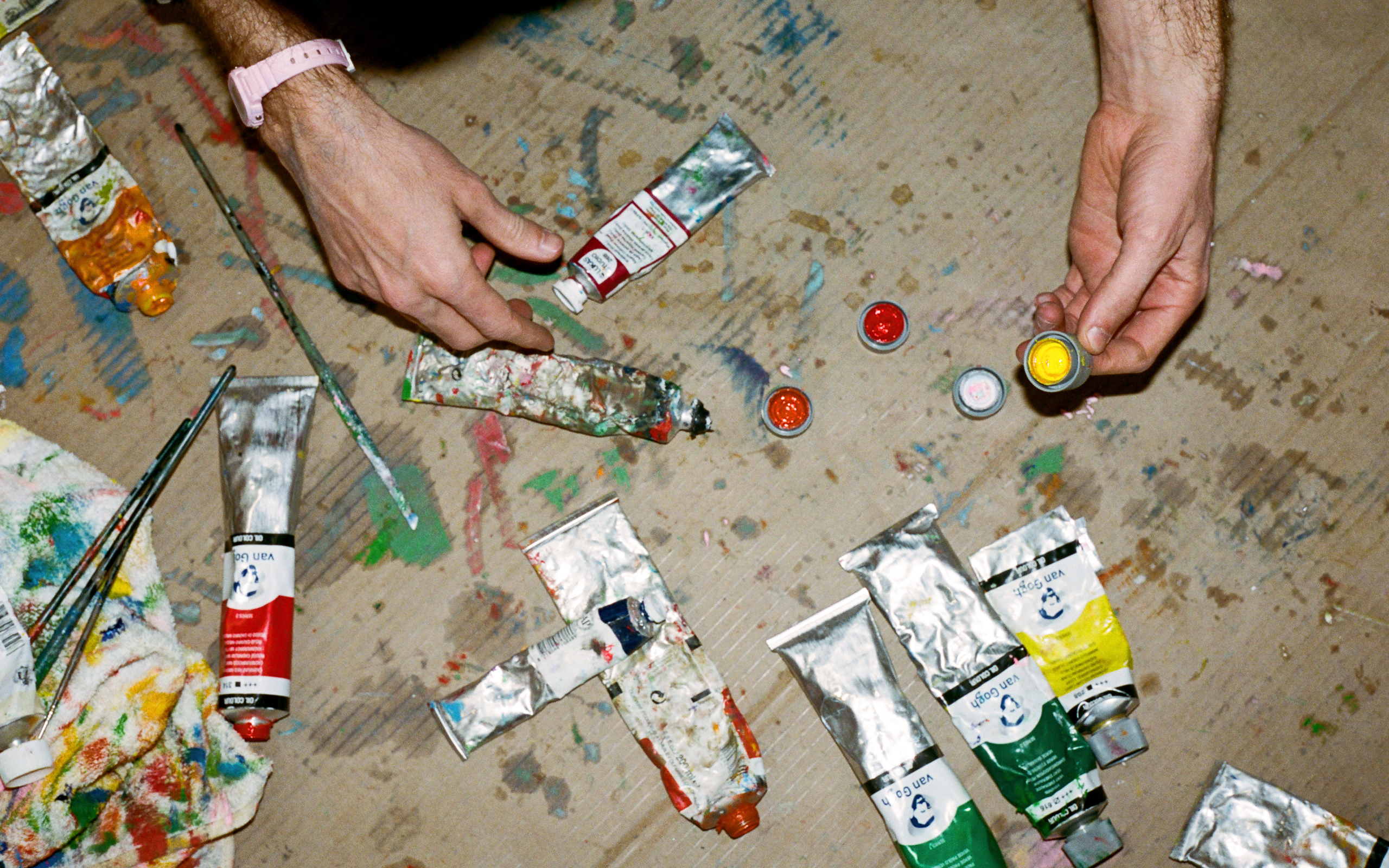
Your paintings are distinguished by their bold color scheme. What attracts you to this bright palette? How do you select the colors you use?
By working with colors, I believe I am gaining some understanding regarding which combination of colors work with each other according to what I find interesting. For a long time, the color pink dominated my paintings. Gradually, in using it in the studio, the childhood recollection came to me of this color being socially associated with the feminine, and therefore despite its allure to me, I ought to be reticent in its use. So, I started creating sketches in which pink appeared only in the most unlikely of contexts, for example as the color of a hat worn by the figure of a rabbi. There is an iconic color combination of blue, green, yellow and red, which are regarded as the primary colors. Throughout at least the past 70 years, these colors have been used for children’s toys, for visual communication, etc. I like to recontextualize them by using them in my paintings in unexpected ways, thereby depicting objects, scenes, places, and people in unrealistic hues. Why do I do this? I don’t necessarily have a rational reason, but I do enjoy the thoughtful use of color.
Did you always know you were going to be a visual artist? Did you ever entertain other creative ambitions?
I initially moved to Berlin 10 years ago in order to study architecture. It was a passion that I had harbored for a long time, and which I was encouraged to pursue by both my family and by close friends who knew of my interest. I worked vigorously on my portfolio, learned German in order to meet the prerequisite presented by the public university, but was nevertheless rejected twice. Professors who taught me at the preparatory school I attended acknowledged my talent for drawing and encouraged me to pursue what they recognized as an interest and tendency that were already there. Their support and mentorship were very meaningful, and we are still in touch to this day. When the application process began for the third time, they suggested that I prepare a Plan B. That became the turning point for me; I applied for the Fine Arts program and was accepted.
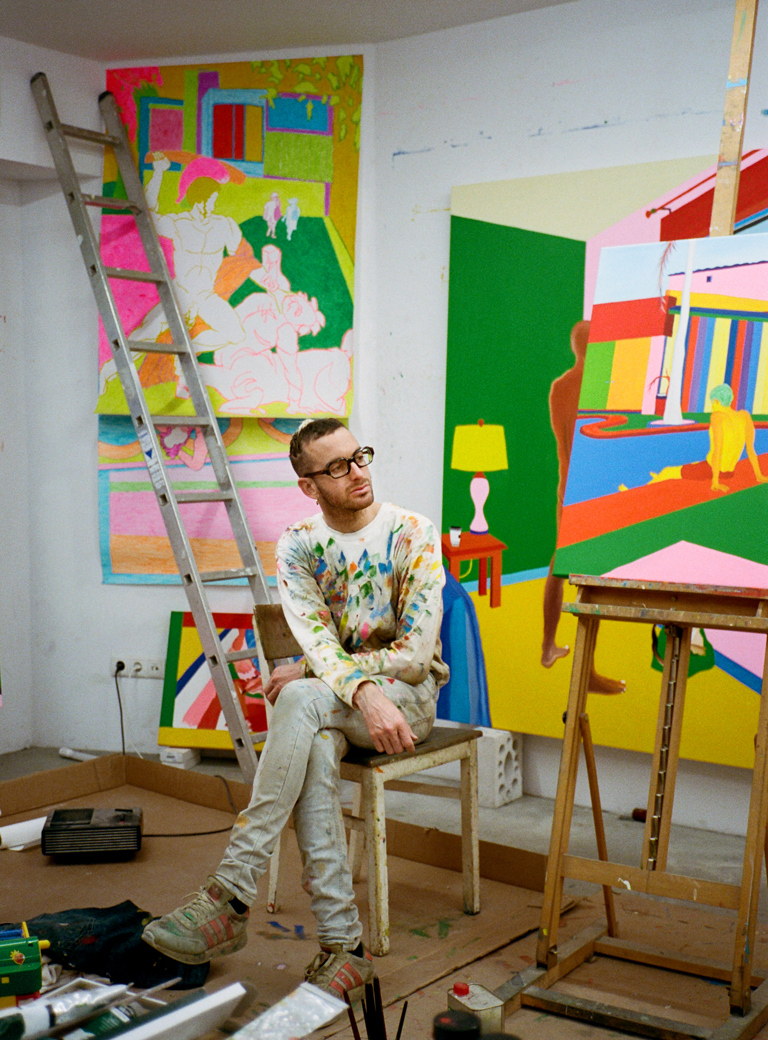
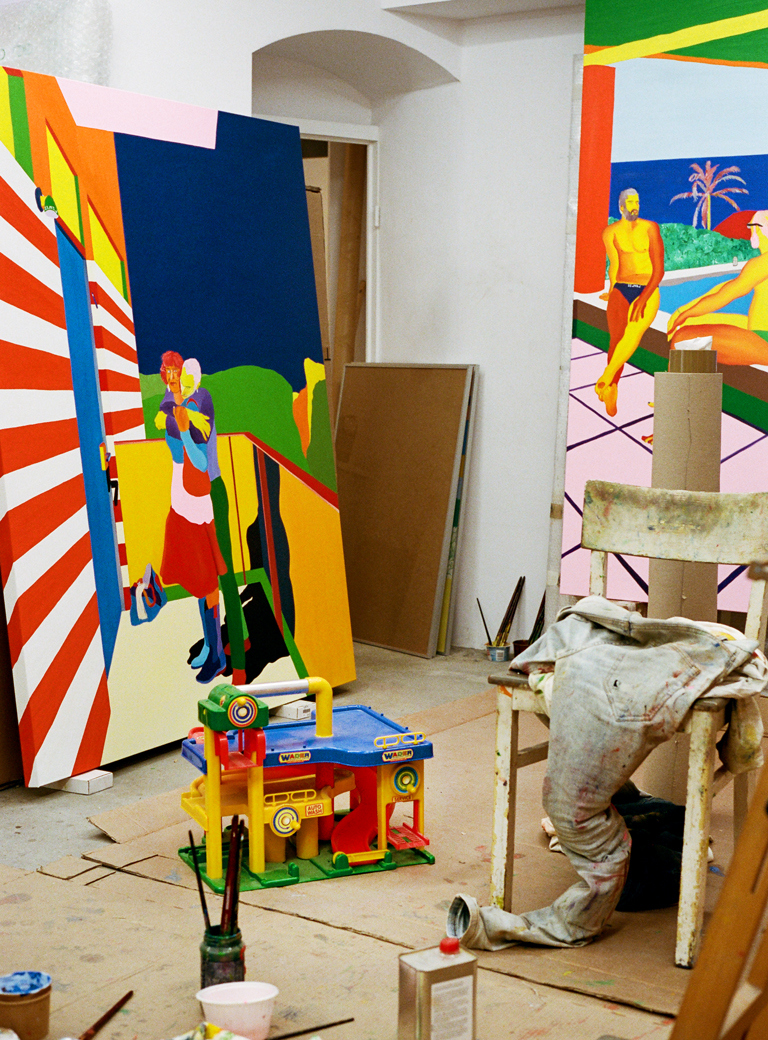
Using a photographic reference in order to paint places you, as the artist, in the position of an outsider looking in. Do you think that there is a parallel between this method and the fact that you were an outsider in your personal life, both as an immigrant to Germany and as someone who hails from a religious background and embedded himself in the liberal and hedonistic lifestyle of Berlin?
That is an astute observation, I’m surprised you can see this about me and to a certain extent I agree, there is a parallel. The word ‘voyeuristic’ has often been directed at me in the context of my works. There is something about my work that hints at the experience of observing something private or something that you shouldn’t necessarily see. I don’t aim for that it in advance, but the inclination toward that aesthetic does characterize my work.
Where do you identify an expression of your personal life trajectory inside your works?
I grew up in a religious settlement, a sort of rural village oriented toward an agricultural lifestyle where people live together as a community. I was not asked whether I wanted to be born into that place, but I grew up there and it is one of the core foundations of who I am. When people hear that’s where I come from, the association that comes to their mind is not of the most liberal and tolerant place. However, my parents are incredibly tolerant and liberal, and it was important for them to show us the world. As a child to a mother from New York and a father from Algeria I was exposed at a young age to a variety of places that very much influenced me. The melting pot of identities and cultures is an integral part of who I am. Being a foreigner in Germany also meant that I have a foreign eye, and that was rejuvenating for me both as an individual and as an artist. In my paintings, I incorporate religious references from my past in Israel, as well as gay references from my life in Berlin. Gradually, I started combining both types of imagery. From day one in art school, my work was colorful. I remember that when I just began studying, I was fascinated by ancient Greek sculpture. I would re-draw the powerful male archetypal Greek figures but add on peyes to them (i.e., sidelocks worn by men and boys in the Orthodox Jewish community).
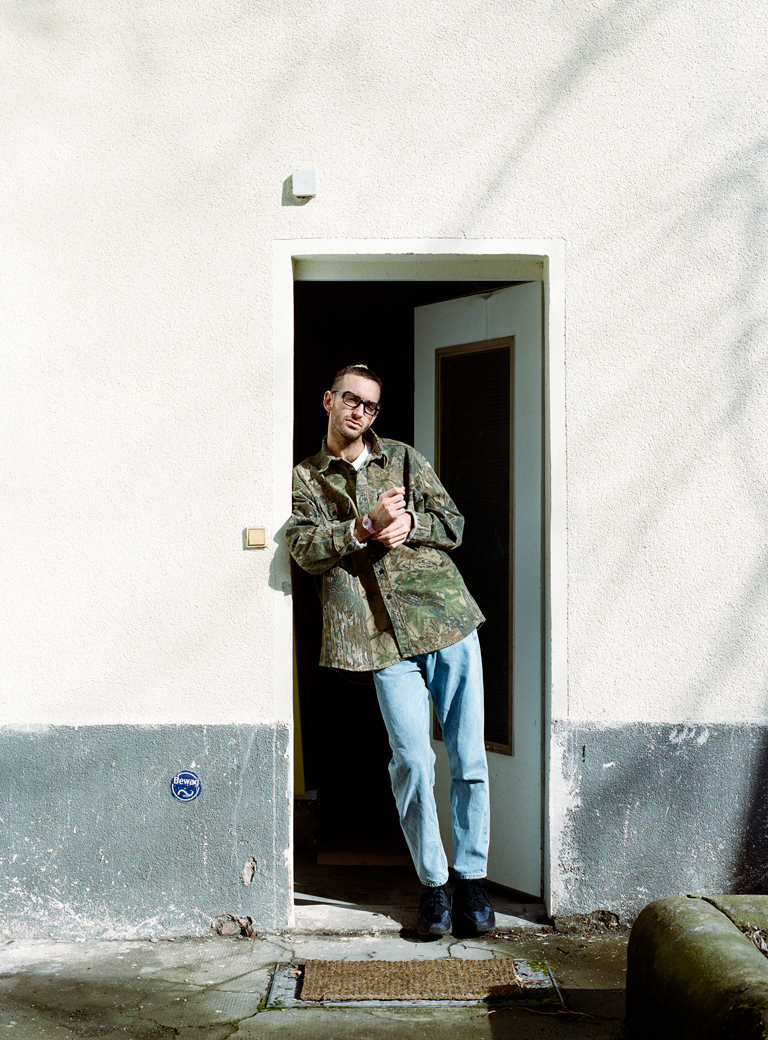
The tension between the sexual, graphic, and urban imagery and between the religious symbols in your work has changed over the years, and I assume that your relationship with it changes as time goes by. Do you have any concern that critics or viewers may brand you as the artist who perpetuates this provocative mix in his paintings?
My relationship to the symbolism in my works changes frequently. In the beginning certain motifs recurred because I felt the need to express them, to get them out of my system. I never used them in order to provoke, I re-created them because they are a part of me. Nowadays I look at these symbols differently. I intersect the different components you refer to because that is my background, my foundation, that’s where I come from, and I like to harmonize the two worlds. I like to treat my work with humor. Often people believe that they detect in my work certain meanings, criticism or ideas that I did not intend, that is fine because things are never simply black or white; the truth is multi-layered.
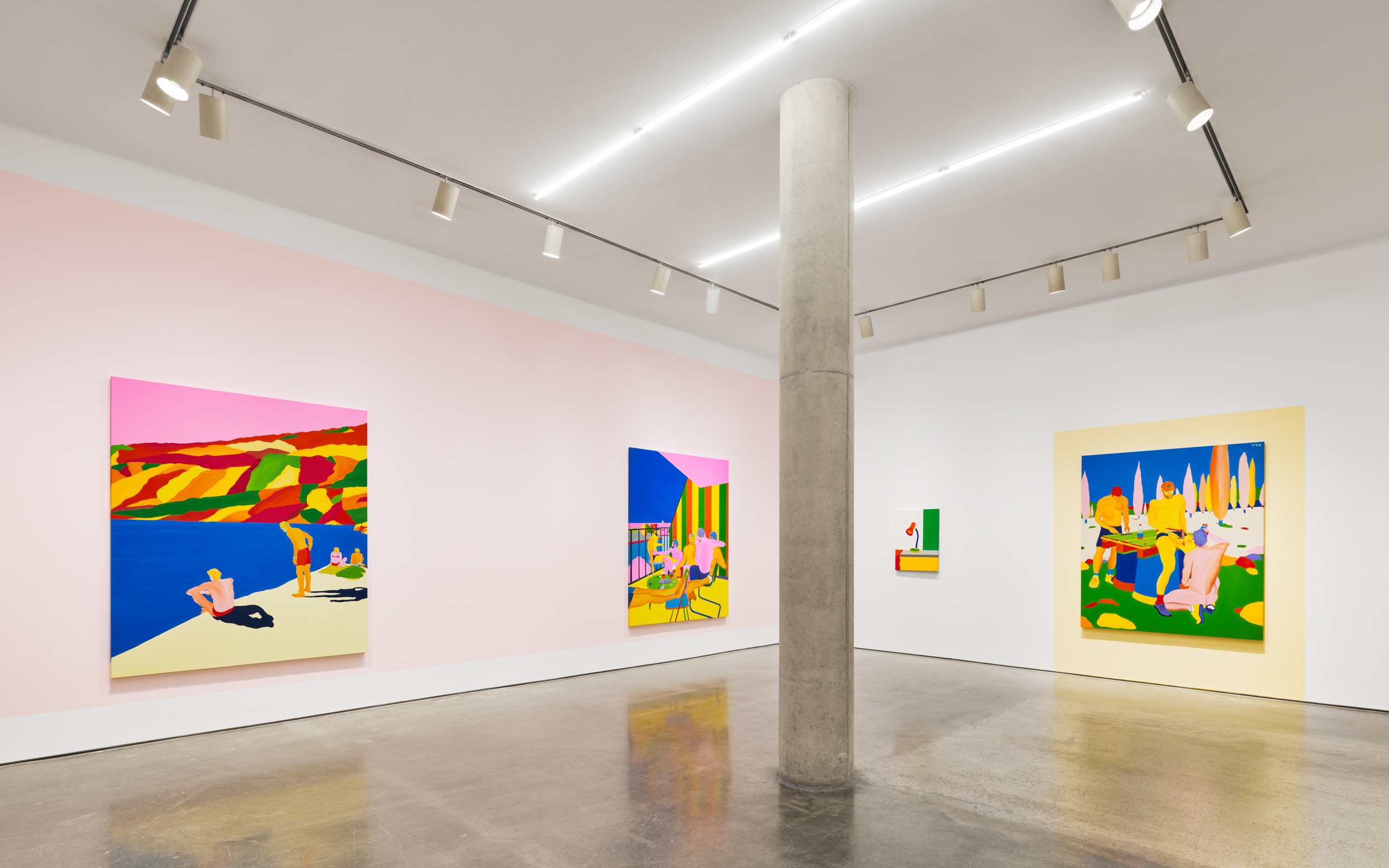
Eurovision at Yossi Milo Gallery, NYC Feb 2022, Photo: Olympia Shannon
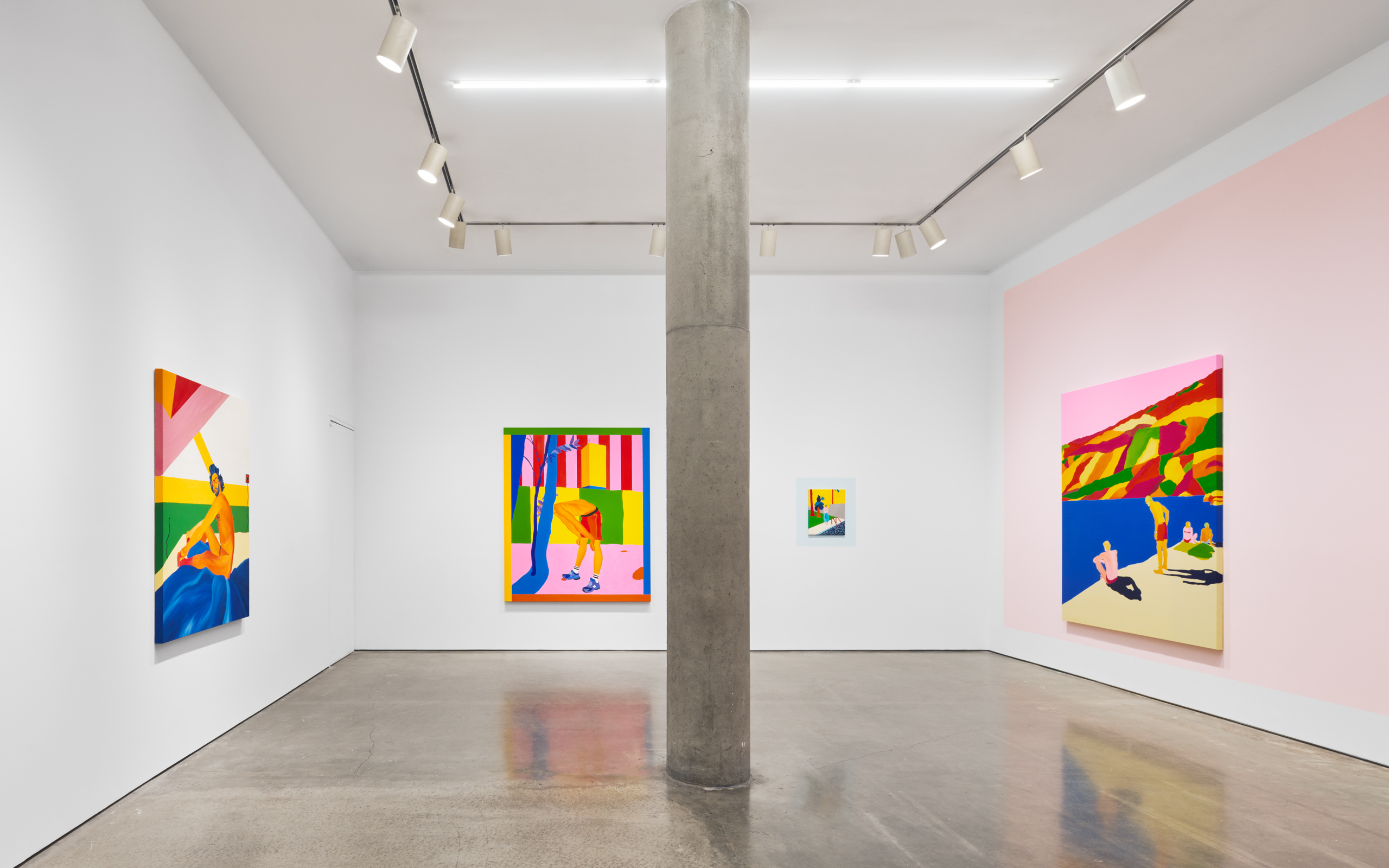
Eurovision at Yossi Milo Gallery NYC, Photo: Olympia Shannon
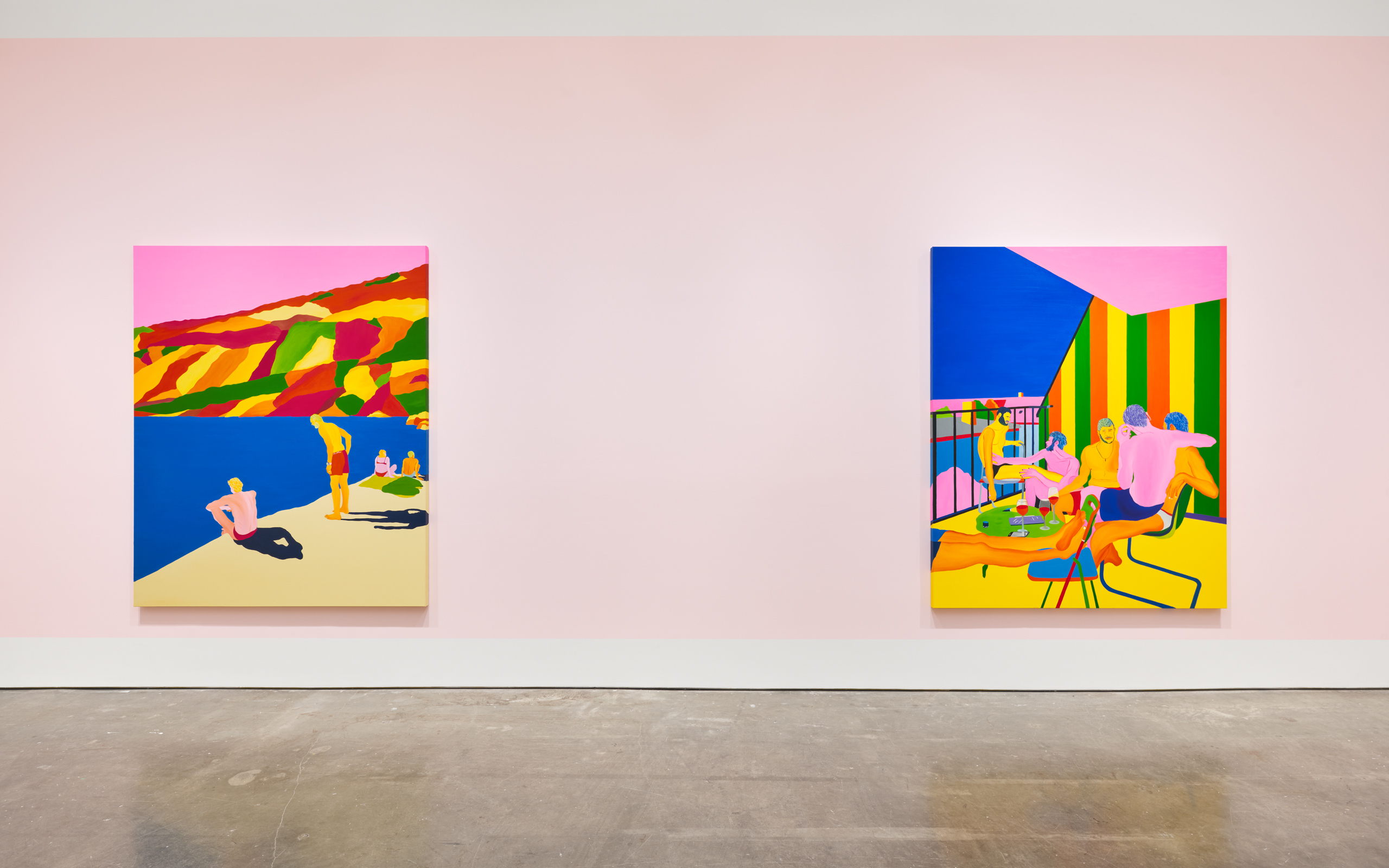
Eurovision at Yossi Milo Gallery NYC, Photo: Olympia Shannon
Interview: Joy Bernard
Photos: Sabrina Weniger


